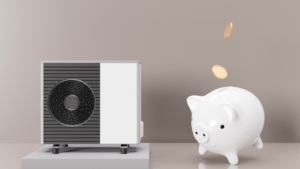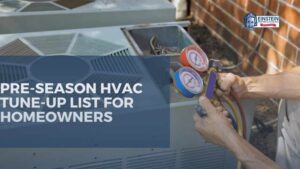As the winter chill gives way to the warmth of spring, it’s the perfect time to prepare your home for the upcoming season. One crucial yet often overlooked aspect of home maintenance is AC vent cleaning. In this comprehensive guide, we will delve into the importance of AC vent cleaning for spring and provide you with a step-by-step approach to ensure your home stays cool and comfortable throughout the warmer months.
Factors to Consider for AC Vent Cleaning
Understanding the Importance of AC Vent Cleaning
Enhancing Indoor Air Quality
When was the last time you thought about the quality of the air circulating in your home? Dust, pollen, and other pollutants can accumulate in your AC vents, leading to compromised indoor air quality. Regular AC vent cleaning is crucial for removing these contaminants, ensuring that the air you breathe is clean and healthy.
Improving Energy Efficiency
Dirty and clogged AC vents can impede airflow, causing your HVAC system to work harder to maintain the desired temperature. This increased workload not only leads to higher energy bills but also puts unnecessary strain on the system, potentially shortening its lifespan. AC vent cleaning is a cost-effective way to improve energy efficiency and keep your utility bills in check.
Extending the Lifespan of Your HVAC System
Just as regular oil changes are essential for a car’s engine, routine air duct cleaning is crucial for the longevity of your HVAC system. By preventing the build-up of dust and debris, you reduce the risk of system malfunctions and extend the lifespan of your equipment, ultimately saving you money on costly vent repairs or ductwork replacements.
Signs That Your AC Vents Need Cleaning
Reduced Airflow
One of the most noticeable signs that your AC vents need cleaning is a significant reduction in airflow. If you find that certain rooms are not receiving adequate cooling, it could be due to blocked vents hindering the distribution of air.
Unpleasant Odors
Musty or unpleasant odors emanating from your vents are a clear indication that mold or bacteria may be thriving in the system. Vent cleaning helps eliminate these odors, providing a fresh and clean scent throughout your home.
Allergy Symptoms
If you or your family members experience increased allergy symptoms such as sneezing, coughing, or watery eyes when the HVAC system is running, airborne allergens are likely being circulated through dirty vents. Cleaning the vents can significantly reduce allergen levels and alleviate these symptoms.
Professional Vent Cleaning Services
When to Hire Professionals
While DIY cleaning is beneficial for routine maintenance, there are instances where professional HVAC service is advisable. If you notice mold growth or excessive dust, or if it has been several years since your last cleaning, it’s time to bring in the experts.
Benefits of Professional Cleaning
Professional AC vent cleaning services use specialized equipment to thoroughly clean and sanitize your HVAC system. They can also identify and address potential issues such as leaks or damaged ductwork, ensuring your system operates at peak efficiency.
Choosing the Right Service Provider
When selecting the best HVAC technician for the job, consider factors such as experience, customer reviews, and certifications. A reputable service provider will have the necessary expertise to handle the intricacies of HVAC systems and provide a thorough and effective cleaning.
Tools and Materials You Will Need
Before you embark on the AC vent cleaning process, gather the necessary tools and materials. Here’s what you’ll need:
Essential Tools
- Screwdriver
- Vacuum cleaner with hose attachment
- Soft-bristle brush
- Microfiber cloths
- Disposable dust masks
- Flashlight
Cleaning Solutions
- Mild detergent
- Warm water
- Anti-bacterial spray
- Vinegar
Preparing for Vent Cleaning
Before diving into the cleaning process, it’s essential to prepare your space and ensure your safety.
Turn Off the HVAC System
- Switch off the heating, ventilation, and air conditioning (HVAC) system to ensure safety during the cleaning process.
- Turning off the system prevents the circulation of dust and debris during cleaning.
Gather Safety Gear
- Wear disposable dust masks to protect yourself from inhaling dust and contaminants.
- Consider wearing old clothes or an apron to shield yourself from dirt and cleaning solutions.
Remove Vent Covers
- Use a screwdriver to carefully remove the vent covers.
- Place the covers in a basin with warm water and mild detergent for cleaning.
Cleaning the AC Vent Covers
Start the cleaning process by focusing on the vent covers.
Soaking Vent Covers
- Submerge the vent covers in warm water and mild detergent.
- Allow them to soak for at least 15-20 minutes to loosen dirt and grime.
Scrubbing Vent Covers
- Use a soft-bristle brush to scrub away any remaining dirt.
- Rinse the vent covers thoroughly with clean water.
Drying Vent Covers
- Allow the vent covers to air dry completely before reattaching them.
- Ensure they are fully dry to prevent the growth of mold.

Vacuuming the AC Vents
Once the vent covers are clean and dry, move on to the ductwork inside.
Attach Hose to Vacuum Cleaner
- Connect the hose attachment to your vacuum cleaner.
- Ensure the attachment has a narrow nozzle to reach into the vents.
Vacuuming Dust and Debris
- Carefully insert the hose into the AC vents and vacuum away dust and debris.
- Move the hose in a gentle, sweeping motion to cover all areas.
Cleaning Ductwork
- Use a flashlight to inspect the ductwork for any stubborn dirt or blockages.
- If necessary, gently brush away the remaining debris with a soft-bristle brush.
Wiping Down AC Vents
With the major debris removed, it’s time to give your vents a thorough wipe-down.
Mix Cleaning Solution
- In a bowl, mix a solution of equal parts water and vinegar.
- Alternatively, use a mild anti-bacterial spray.
Dampen Microfiber Cloth
- Dip a microfiber cloth into the cleaning solution.
- Wring out excess liquid to avoid dripping.
Wipe Down Vents
- Carefully wipe down the interior surfaces of the vents.
- Ensure you reach as far as possible into the ducts for a comprehensive cleaning.
Replacing Vent Covers
With the cleaning process complete, it’s time to put everything back in place.
Ensure Vent Covers are Dry
- Double-check that the vent covers are completely dry.
- Any moisture left can lead to mold growth.
Reattach Vent Covers
- Use the screwdriver to reattach the vent covers securely.
- Ensure they are aligned correctly for a neat appearance.
Implementing Preventive Measures
Regular Filter Replacement
One of the simplest yet most effective preventive measures is to regularly replace your HVAC system’s air filters. Clean air filters allow for better airflow and trap airborne particles, reducing the strain on your system and maintaining good air quality.
Humidity Control
Controlling humidity levels in your home can prevent mold growth in your AC vents. Consider using a dehumidifier, especially in damp areas such as basements, to maintain an environment that is less conducive to mold and bacteria.
Professional Maintenance
Schedule regular professional maintenance for your HVAC system to address potential issues before they escalate. Professional HVAC technicians can inspect, clean, and tune your system to ensure optimal performance and longevity.
Monitoring and Regular Inspections
Implement a Monitoring Schedule
After completing the initial vent cleaning, establish a regular monitoring schedule to keep track of any changes in your system’s performance. This could include monthly visual inspections of vent covers, as well as periodic checks for any unusual odors or changes in airflow.
Addressing Issues Promptly
Should you notice any signs of dust accumulation, reduced airflow, or unpleasant odors returning, take immediate action. Promptly addressing these issues can prevent them from escalating and maintain the effectiveness of your air duct cleaning efforts.
DIY Maintenance Tips for Spring
Seasonal Vent Checks
Consider incorporating AC vent checks into your spring cleaning routine. Inspect each vent cover for dust or debris, and if necessary, use a vacuum cleaner with a nozzle attachment to remove any build-up.
Air Duct Sealing
Inspect the seams and connections of your air ducts for any visible gaps or leaks. Sealing these gaps with duct mastic or foil tape can prevent the intrusion of dust and contaminants into the system.
UV Light Installation
For an added layer of protection against mold and bacteria, consider installing UV lights in your HVAC system. UV lights are designed to kill microorganisms, keeping your AC vents cleaner for a more extended period.
Educating Household Members
Importance of Clean Vents
Educate your household members about the significance of clean AC vents. Emphasize how it contributes to a healthier living environment, reduces energy consumption, and extends the lifespan of the HVAC system.
Best Practices for Daily Living
Encourage practices that contribute to cleaner air, such as removing shoes at the entrance to reduce outdoor pollutants, and regularly cleaning surfaces to minimize dust. Small, consistent efforts can significantly impact the overall air quality in your home.
Utilizing Smart Thermostats
Energy-Efficient Temperature Control
Investing in a smart thermostat can optimize your HVAC system’s performance. These devices can regulate temperature more efficiently, reducing the overall workload on the system and contributing to energy savings.
Air Quality Monitoring
Some smart thermostats also include air quality monitoring features. By keeping an eye on air quality metrics, you can identify potential issues early on and take proactive measures to maintain a healthy indoor environment.
Sustainable Practices
Eco-Friendly Cleaning Products
When engaging in DIY cleaning, opt for eco-friendly cleaning products. Choosing environmentally conscious options ensures that the cleaning process has minimal impact on the environment and indoor air quality.
Energy-Efficient HVAC Systems
Consider upgrading to an energy-efficient HVAC system if your current one is aging or inefficient. Newer models often come with advanced features that contribute to both energy savings and improved air quality.
Conclusion
Regular attention to your AC vents not only enhances indoor air quality and energy efficiency but also promotes a healthier living environment for you and your loved ones. Make the most of the spring season by incorporating these AC vent cleaning strategies into your home maintenance routine, and enjoy the benefits of a refreshed and efficient HVAC system. With these practices in place, along with contacting the best HVAC technicians at Einstein Heating and Cooling, you’ll be well-prepared to face the warmer months ahead with a cool and clean home environment.








